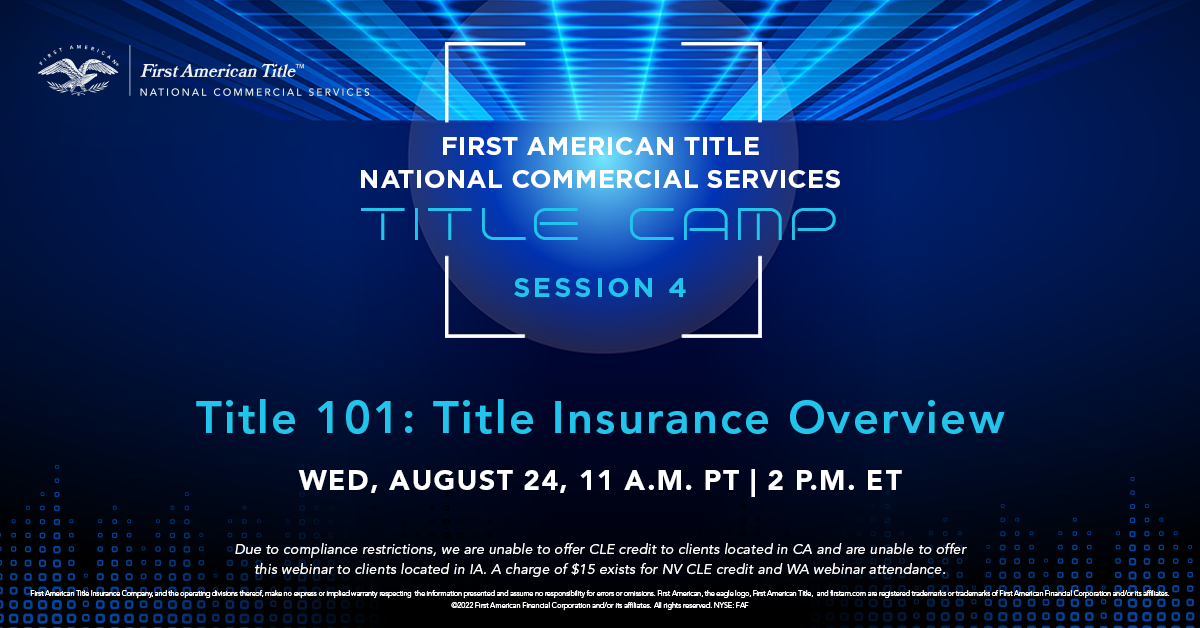
Title insurance is a contractual obligation that protects against losses that occur when title to a property is not free and clear of defects (e.g., liens, encumbrances and defects that were unknown when the title policy was issued). Title insurance also guarantees loan priority. The terms of the policy define what risks are covered and what risks are excluded from coverage. The title insurer will reimburse you or your lender for losses that are covered, up to the face amount of the policy, and any related legal expenses. This protection is effective as of the issue date of the policy and covers defects arising prior to your ownership. Title companies issue policies on all types of real and personal property. Two types of title insurance policies for real property are the most common – a lender’s policy and an owner’s policy.
The History of Title Insurance
Prior to the institution of title insurance, purchasing real estate in the United States was a far riskier venture. During a property transaction, conveyancers would establish the rights of title to a property based on public records searches or other property abstracts. The title would necessarily be cleared of any liens, rights, or other encumbrances prior to conveying the property to new buyers or lending against the property; however, with limited resources and no insurance backing, the risk of losing a property due to unresolved issues was still significant.
Watson v. Muirhead
Although it now protects land purchases across the United States, the practice of insuring title began after a Pennsylvania Supreme Court ruling in 1868. The case, Watson v. Muirhead, 57 Pa. 161, settled the matter of ownership over a property purchased after an “abstract of title,” or title records search, was conducted. During his research, the transaction conveyancer found a lien on the title, which he then turned over to an attorney for legal opinion. The attorney advised that the judgment was not in fact a valid lien. With this assurance, the conveyancer and purchaser completed the transaction. Not long afterward, the property was sold at a Sherriff’s sale to pay off the lien, which was in fact lawful.
The court ruled that the lien, and thus the Sherriff’s sale, was indeed lawful, and the conveyancer involved in the transaction was not held liable for misinformation because the legal standard was “negligence,” or failure to act with due care. Since the conveyancer had relied upon an attorney’s opinion that the lien was invalid, the conveyancer had used due care — even if he was incorrect.
The Creation of the First Title Insurance Company
The judgment, and subsequent loss to the purchaser, then prompted a group of Philadelphia conveyancers to establish a way to protect the innocent buyers of real property. In 1876, this group formed the first title insurance company, whose mission it was to protect “the purchasers of real estate and mortgages against losses from the defective title, liens, and encumbrances,” and added, “through these facilities, transfer of real estate and real estate securities can be made more speedily and with greater security than heretofore.” Shortly thereafter, title insurance companies became established in other large metros throughout the United States, including New York City, Chicago, Minneapolis, San Francisco, and Los Angeles.
In 1889, just over 20 years following the birth of title insurance in the United States, the Orange County Title Company was established; the original predecessor to First American Title Insurance Company, the largest subsidiary of First American Financial Corporation.
Learn more about title insurance, title commitment and the title process by joining our Title 101: Title Insurance Overview Title Camp 4 webinar on August 24.
Due to compliance restrictions for the live webinar on August 24, we are unable to offer CLE credit to clients located in CA and are unable to offer this webinar in IA.
* In compliance with regulations, if you wish to obtain NV CLE credit, a $15 fee will be charged.
First American Title Insurance Company, and the operating divisions thereof, make no express or implied warranty respecting the information presented and assume no responsibility for errors or omissions. First American, the eagle logo, First American Title, and firstam.com are registered trademarks or trademarks of First American Financial Corporation and/or its affiliates.
References
https://www.firstam.com/title/resources/reference-information/home-buyer-guide/history-of-title-insurance/index.html#:~:text=In%201876%2C%20this%20group%20formed,be%20made%20more%20speedily%20and
https://www.firstam.com/company-history/index.html

